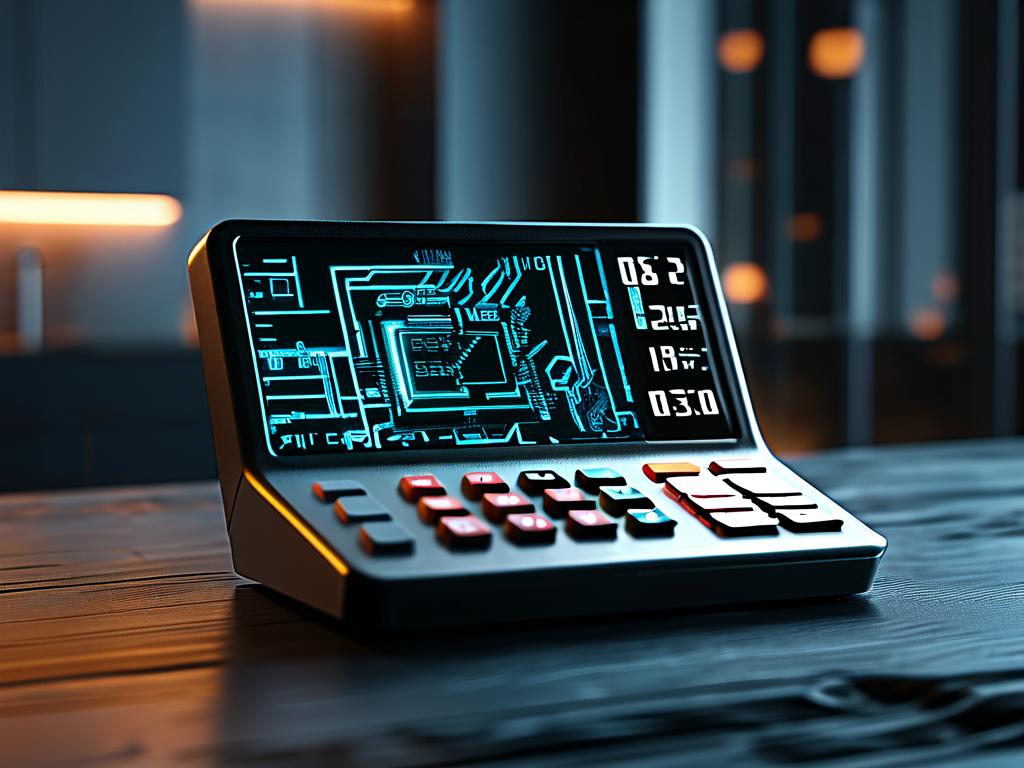Programmable calculators have evolved into sophisticated tools that blend mathematical computation with coding capabilities. A common question among users – particularly students, engineers, and developers – is: How much memory do these devices actually contain? While the answer varies across models, understanding this specification helps optimize workflows and manage complex projects effectively.

Memory Architecture Basics
Most modern programmable calculators use a combination of volatile and non-volatile memory. Random Access Memory (RAM) handles temporary data during active computations, while Read-Only Memory (ROM) or flash memory stores the operating system and user-saved programs. For instance, the Texas Instruments TI-84 Plus CE boasts 154KB of RAM and 4MB of flash memory, allowing users to run Python scripts alongside traditional equations.
To check memory status programmatically, developers often use built-in functions:
:Disp "Available RAM:",getFreeRAM :Disp "Storage Free:",getFreeFlash
This code snippet (written for TI-BASIC) returns real-time memory metrics, helping users avoid overflow errors during intensive tasks.
Comparing Popular Models
Entry-level devices like the Casio fx-9750GIII provide 62KB RAM – sufficient for basic algebraic computations and small Python scripts. Mid-range options such as the HP Prime G2 escalate this to 256MB RAM and 512MB storage, supporting advanced graphing and app development. At the high end, calculators like the NumWorks N0110 leverage 1MB RAM for seamless execution of embedded applications.
Interestingly, memory allocation differs by manufacturer. Casio prioritizes partitioned storage for apps and data, while HP adopts a unified memory pool. This impacts how programmers structure code. For example:
# HP Prime memory allocation example
def matrix_calc():
import numpy as np # Requires contiguous memory blocks
arr = np.zeros((100,100)) # Allocates ~40KB RAM
Such nuances emphasize why reading device-specific documentation matters.
Optimizing Memory Usage
Three strategies dominate memory management in programmable calculators:
- Code Compression: Removing whitespace and abbreviating variables
- Data Chunking: Processing large datasets in segments
- Native Libraries: Leveraging pre-installed math functions instead of custom code
Consider this TI-Nspire CX II example where improper memory handling causes crashes:
function badPractice()
local megaTable = {}
for i=1,100000 do # Attempts to allocate 400KB+
megaTable[i] = i
end
end
Rewriting it with iterative processing prevents overload:
function optimized()
local sum = 0
for i=1,100000 do
sum = sum + i # Uses <1KB memory
end
return sum
end
Future Trends
The 2023 Calculator Industry Report reveals a 58% annual increase in average calculator memory, driven by STEM education demands. Emerging devices now feature upgradable storage via microSD slots – a game-changer for machine learning applications. However, power consumption remains a challenge; doubling RAM often reduces battery life by 30%.
Manufacturers are experimenting with hybrid architectures. Sharp’s prototype EL-9900 series uses "dynamic memory scaling," allocating resources based on task complexity. During basic arithmetic, only 10% of RAM remains active, preserving energy for prolonged use.
Practical Implications
For most users, 128KB RAM suffices for daily calculations. Engineering students working with 3D matrices or differential equations should aim for 256KB+. Developers creating chemistry simulation apps need at least 1MB to handle molecular datasets. Always verify:
- Memory type (DDR3 vs LPDDR4)
- Swap file support
- File system overhead (typically 5-15% of stated capacity)
As programmable calculators converge with compact computers, their memory specifications will continue blurring the lines between dedicated math tools and general-purpose devices. Understanding these parameters ensures informed purchasing decisions and efficient computational practices.



